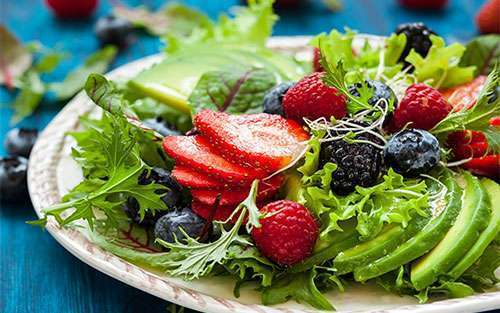
Salads seem like the ultimate healthy lunch, don’t they? That is, until you load your lettuce with bacon bits, croutons, cheese and, of course, that creamy dressing.
Salad dressings get a bad rap for piling on just as much sodium and calories as they do flavor. But don’t ditch your salad dressing just yet. It turns out that your body actually needs some fat to absorb the vitamins A, E and K packed in your greens. The right salad dressing can be the perfect vessel for healthy fat.
In recognition of National Salad Month, we’ve got a few tips to ensure your dressing boosts—not undoes—all the health benefits of choosing a salad over a sandwich.
Choose oil-based dressings
Research shows that people who put dressing on their salads absorbed more carotenoids than those who skipped it altogether. But not all salad dressings are created equal. Scientists have also found that people who chose salad dressings with monosaturated fat — canola, olive or sesame oil, for instance — absorbed more of the healthy carotenoids in salad than those who used dressings with saturated (butter) or polysaturated fats like corn oil. The latter two groups needed to use far more dressing to get the same result.
Not surprisingly, monosaturated dressings like vinaigrettes are generally healthier than their saturated and polysaturated counterparts. Some ranch and creamy Caesar dressings, for instance, have more than 250 milligrams of sodium and 160 calories per serving. Your nutrient-rich greens are no match for that health hit.
The key takeaway? Opt for olive oil and vinegar-based salad dressings to give your body the most nutrients.
Stick to the serving size
With a base as neutral as lettuce, it’s tempting to be heavy-handed with your dressing. But as with most diet recommendations, moderation is key. The typical serving size on a salad dressing bottle is 2 tablespoons. Try measuring that out next time you have a salad at home so you can gauge how much to use on future salads. And when you order salads at a restaurant, ask for the dressing on the side so you can control how much makes it onto your plate.
Make your own dressing
Like many bottled and boxed items in the grocery store, salad dressings are typically highly processed and packed with unhealthy ingredients. And fat-free versions are often loaded with salt or sugar to make up for the missing fat, which can quickly take away any true health benefits.
A simple antidote? Make your own salad dressing at home. Try this recipe for a vinaigrette with fresh chives, which is packed with olive oil, herbs and lemon. And if you need to buy a store-bought dressing, look for an oil-based kind with the least number of unrecognizable ingredients on the label.
Come back to our blog each week for more Friday Fix: Your Weekly Nutrition Supplement. If you missed last week’s Fix, you can find it here.















